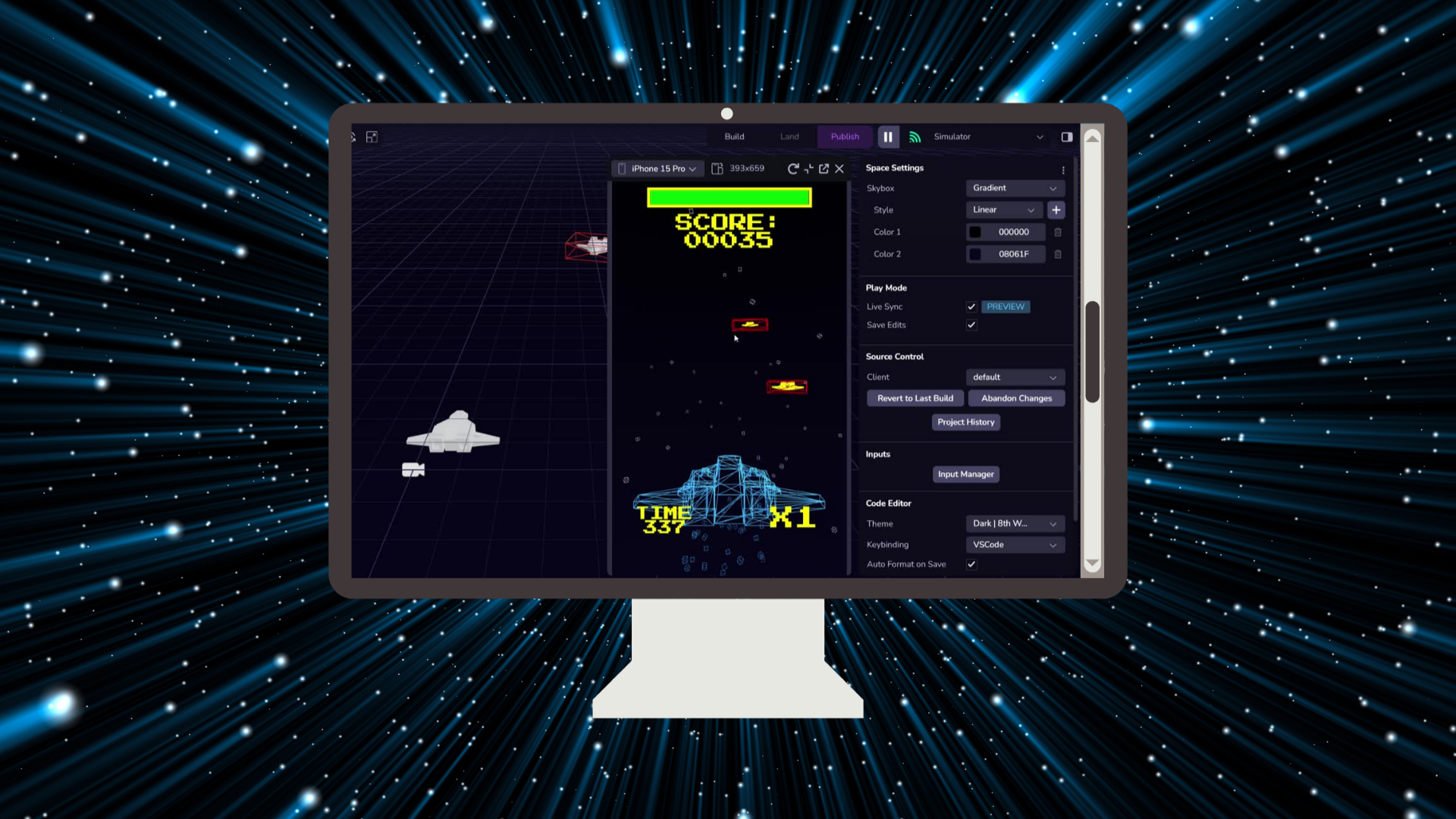8th Wall Blog
Behind the Build: Flying to the Beat with Rhythmz
How Emilio Martinez Romero blended classic arcade action with rhythm gameplay using Niantic Studio

Rhythmz is a retro arcade rhythm shooter created in Niantic Studio, blending the spirit of classic games like Space Invaders with the timing and energy of rhythm games like OSU. With vibrant neon visuals, pulsating beats, and fast-paced action, Rhythmz invites players to blast incoming enemies to the beat of the music in a highly replayable, browser-based experience.
We caught up with developer Emilio Martinez Romero to learn how Rhythmz came to life, what technical tools powered it, and how Niantic Studio made it possible to synchronize music and gameplay in a smooth, cross-platform experience.

What inspired you to create Rhythmz?
I was inspired by the energy of classic arcade shooters and the precision challenge of rhythm games. I wanted to merge those two genres into something fast, fun, and visually striking—an experience where music wasn’t just background noise, but an essential part of how you play.
Rhythmz was built to capture that feeling of "being in the zone," where shooting enemies in time with the music creates both satisfaction and momentum. It’s a throwback to the arcade era, but powered by modern WebAR and browser-based technologies.
How did Niantic Studio help bring your vision to life?
Niantic Studio made it much easier to bring this project to life, thanks to several key features:
- Physics system: Studio’s built-in collision physics helped manage basic gameplay, including enemy collisions and projectile impacts.
- Animation components: Animations for scaling and timing effects were much simpler to implement, adding polish to enemy indicators and VFX.
- Tap and click input: Cross-platform input handling (desktop and mobile) was easy to set up, making the core interaction of shooting feel natural everywhere.
- External library integration: I was able to import Tone.js directly to handle music playback and timing. Studio’s flexibility made working with external JavaScript libraries seamless.
What challenges did you face during development?
One of the bigger challenges was managing UI interactions. In Niantic Studio, UI events aren't natively integrated with 3D objects in the same way. To solve this, I used the DOM directly—searching for div elements after they were loaded and attaching onClick event listeners manually.
This approach also lets me dynamically adjust styles like fonts, cursors, and other visual cues. It took a bit of trial and error, but it gave me full control over the user interface without breaking the flow of the game.
What were the key steps in building your projects?
- Ideation: Sketching out a simple but powerful visual idea that captured the spirit of arcade rhythm games.
- Building core mechanics: Focusing early on perfecting the shooting, timing, and enemy behavior.
- Integrating models and assets: Using simple 3D shapes and neon styling to stay true to the arcade theme.
- Designing the game loop: Setting up the full experience, from starting menus to game sessions to end screens.
- Polishing: Adding final touches like special effects, responsive UI, sound syncing, and testing for overall balance and performance.
What advice would you give to other developers using Niantic Studio?
Have fun with it, and divide and conquer. Focus on your core mechanics first, get them working well, and then expand outward. Test early and often—see how players react to the basic gameplay before layering in visuals or polish.
Building small prototypes first helps keep things manageable, and Niantic Studio is perfect for quick iteration. Also, never underestimate the value of making development fun for yourself.
Where do you see the future of AR—and how does Niantic Studio fit into that vision?
I see the future of AR as a true platform for creative freedom—where people can express their wildest ideas without being limited by physical space or high barriers to entry. AR can merge imagination with reality, and experiences can be easily shared across the world.
Niantic Studio plays a big role in that future by making AR development accessible to more people, even those without deep programming backgrounds. The ability to anchor creative, interactive experiences in real space—and do it easily with Studio’s tools—will help bring more bold, personal, and meaningful projects to life.
Play, Learn, and Build
Rhythmz shows just how much is possible when you combine strong core mechanics, rhythm, and responsive browser-based gameplay. If you're looking for inspiration, Rhythmz is a great reminder that simplicity, polish, and great interaction design can go a long way.
Ready to build your own game? Start exploring what’s possible with Niantic Studio today.
.png)